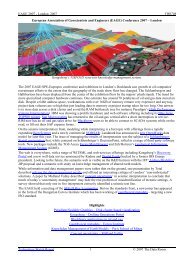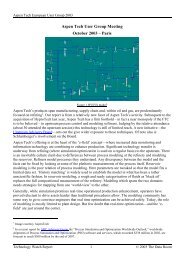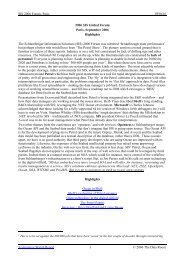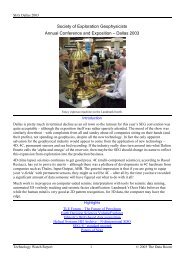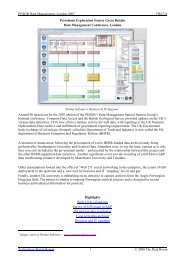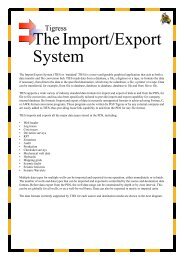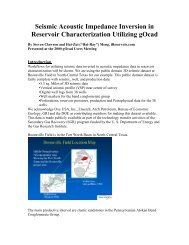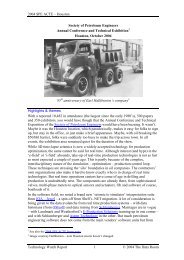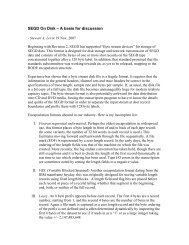Shahab D. Mohaghegh, Ph.D. Intelligent Solutions, Inc. & West
Shahab D. Mohaghegh, Ph.D. Intelligent Solutions, Inc. & West
Shahab D. Mohaghegh, Ph.D. Intelligent Solutions, Inc. & West
You also want an ePaper? Increase the reach of your titles
YUMPU automatically turns print PDFs into web optimized ePapers that Google loves.
<strong>Shahab</strong> D. <strong>Mohaghegh</strong>, <strong>Ph</strong>.D.<br />
<strong>Intelligent</strong> <strong>Solutions</strong>, <strong>Inc</strong>. & <strong>West</strong> Virginia University<br />
the reservoir using actual measurements. It provides qualitatively accurate reservoir characteristics that<br />
can play a key role in making important and strategic field development decisions.<br />
AN ALTERNATIVE TO CONVENTIONAL MODELING<br />
Top‐Down <strong>Intelligent</strong> Reservoir Modeling starts with well‐known reservoir engineering techniques such<br />
as Decline Curve Analysis, Type Curve Matching, History Matching using single well numerical reservoir<br />
simulation, Volumetric Reserve Estimation and calculation of Recovery Factors for all the wells<br />
(individually) in the field. Using statistical techniques multiple Production Indicators (3, 6, and 9 months<br />
cumulative production as well as 1, 3, 5, and 10 year cumulative oil, gas and water production and Gas<br />
Oil Ratio and Water Cut) are calculated. These analyses and statistics generate a large volume of data<br />
and information that are spatiotemporal snap shots of reservoir behavior. This large volume of data is<br />
processed using the state‐of‐the‐art in artificial intelligence and data mining in order to generate a<br />
complete and cohesive model of the entire reservoir. This is accomplished by using a set of discrete<br />
modeling techniques to generate production related predictive models of well behavior, followed by<br />
intelligent models that integrate the discrete models into a cohesive picture and model of the reservoir<br />
as a whole, using a continuous fuzzy pattern recognition algorithm.<br />
Top‐Down <strong>Intelligent</strong> Reservoir Model is calibrated using the most recent set of wells that have been<br />
drilled in the field. The calibrated model is then used for field development strategies to improve and<br />
enhance hydrocarbon recovery.<br />
DETAILS AND AN EXAMPLE OF TOP‐DOWN MODELING<br />
Top‐Down Modeling is an elegant integration of state‐of‐the‐art in AI&DM with classic reservoir<br />
engineering techniques and principles. It provides a unique perspective of the field and the reservoir<br />
using actual measurements. It provides qualitatively accurate reservoir characteristics that can play a<br />
key role in making important and strategic field development decisions.<br />
Table 1. Number of wells starting<br />
production in each of the years.<br />
One of the most important<br />
advantages of Top‐Down modeling<br />
is its ease of development. It is<br />
Reservoir Engineering with AI&DM<br />
www.OilIT.com<br />
Figure 3. Generating the Voronoi cells for the wells in the Carthage<br />
field, Texas.<br />
4




